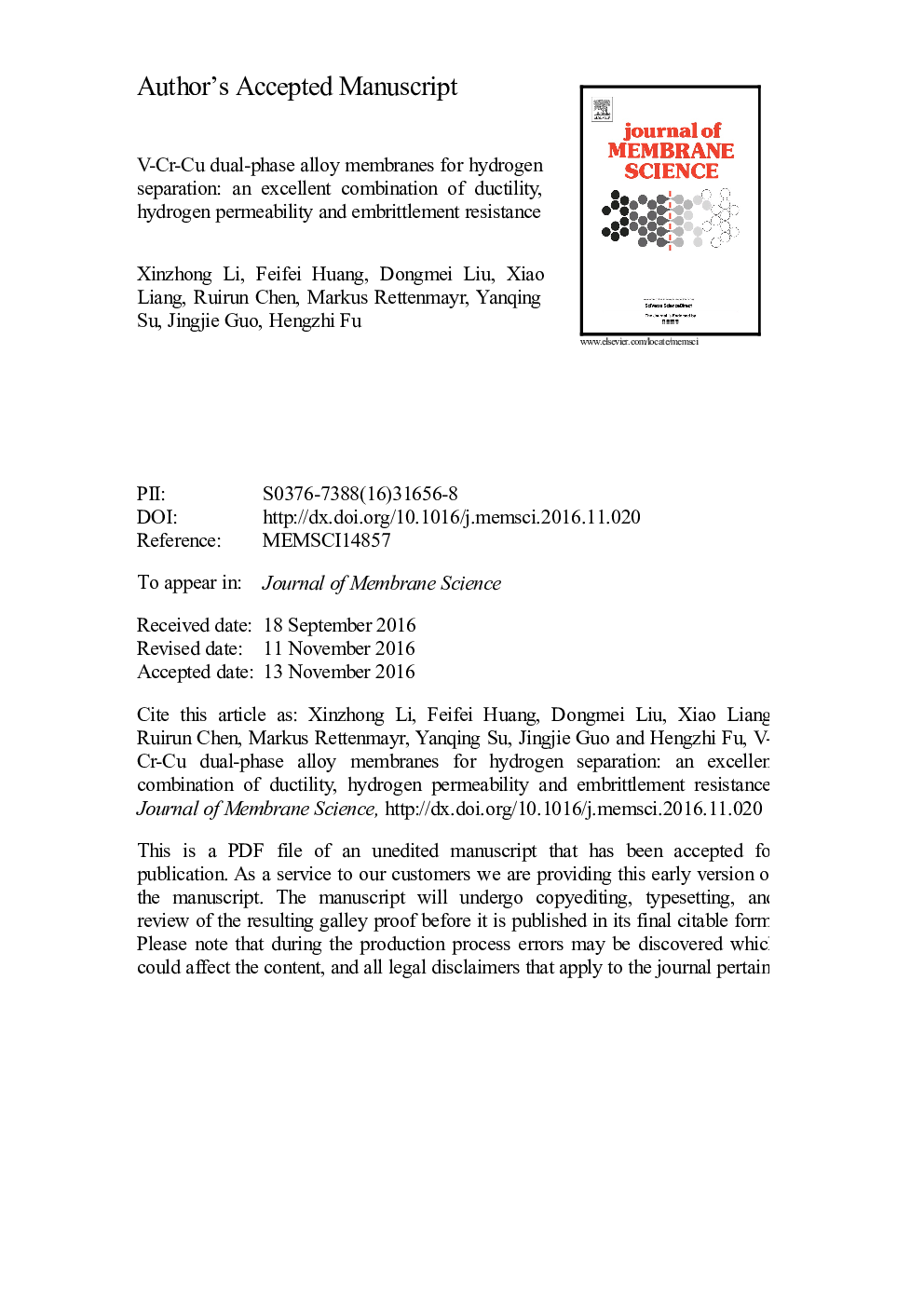| Article ID | Journal | Published Year | Pages | File Type |
|---|---|---|---|---|
| 4989224 | Journal of Membrane Science | 2017 | 29 Pages |
Abstract
V-Cr-Cu alloys consisting of bcc-(V) and fcc-(Cu) are developed as a new type of hydrogen permeable metal membranes based on the idea of distributing functions on the different phases. The bcc-(V) is mainly responsible for hydrogen permeation, and the fcc-(Cu) imparts improvement in ductility. The addition of Cr in as-cast (V100âxCrx)70Cu30 (x=0â¦10 at%) alloys reduces the hydrogen solubility and thus improves the hydrogen embrittlement resistance, but decreases the hydrogen diffusivity and permeability. As-cast (V95Cr5)70Cu30 exhibits an excellent combination of ductility, hydrogen permeability and embrittlement resistance. After cold rolled to a thin foil of ~100 µm in thickness and subsequent annealing, this alloy membrane shows a pronounced high hydrogen permeation flux, particularly ~34 cc H2 cmâ2minâ1 at a hydrogen pressure difference of 0.7 MPa at 673 K. This corresponds to a permeability of ~3.98Ã10â8 mol H2 mâ1sâ1Paâ0.5. This work demonstrates that the dual-phase structure in V-Cr-Cu alloys ensures a feasible route for a large scale fabrication of thin membranes by cold rolling that features high hydrogen permeation proprieties.
Related Topics
Physical Sciences and Engineering
Chemical Engineering
Filtration and Separation
Authors
Xinzhong Li, Feifei Huang, Dongmei Liu, Xiao Liang, Ruirun Chen, Markus Rettenmayr, Yanqing Su, Jingjie Guo, Hengzhi Fu,
